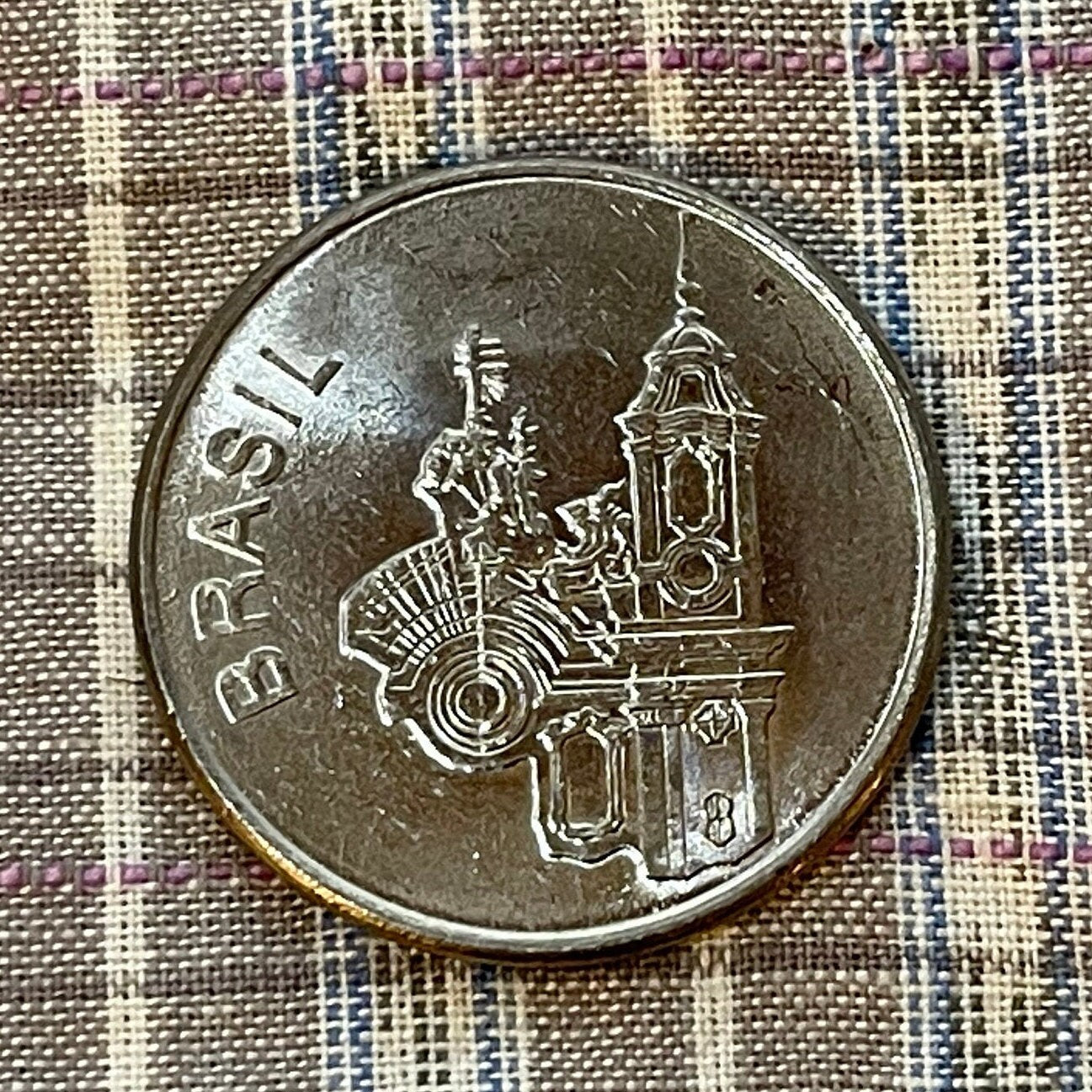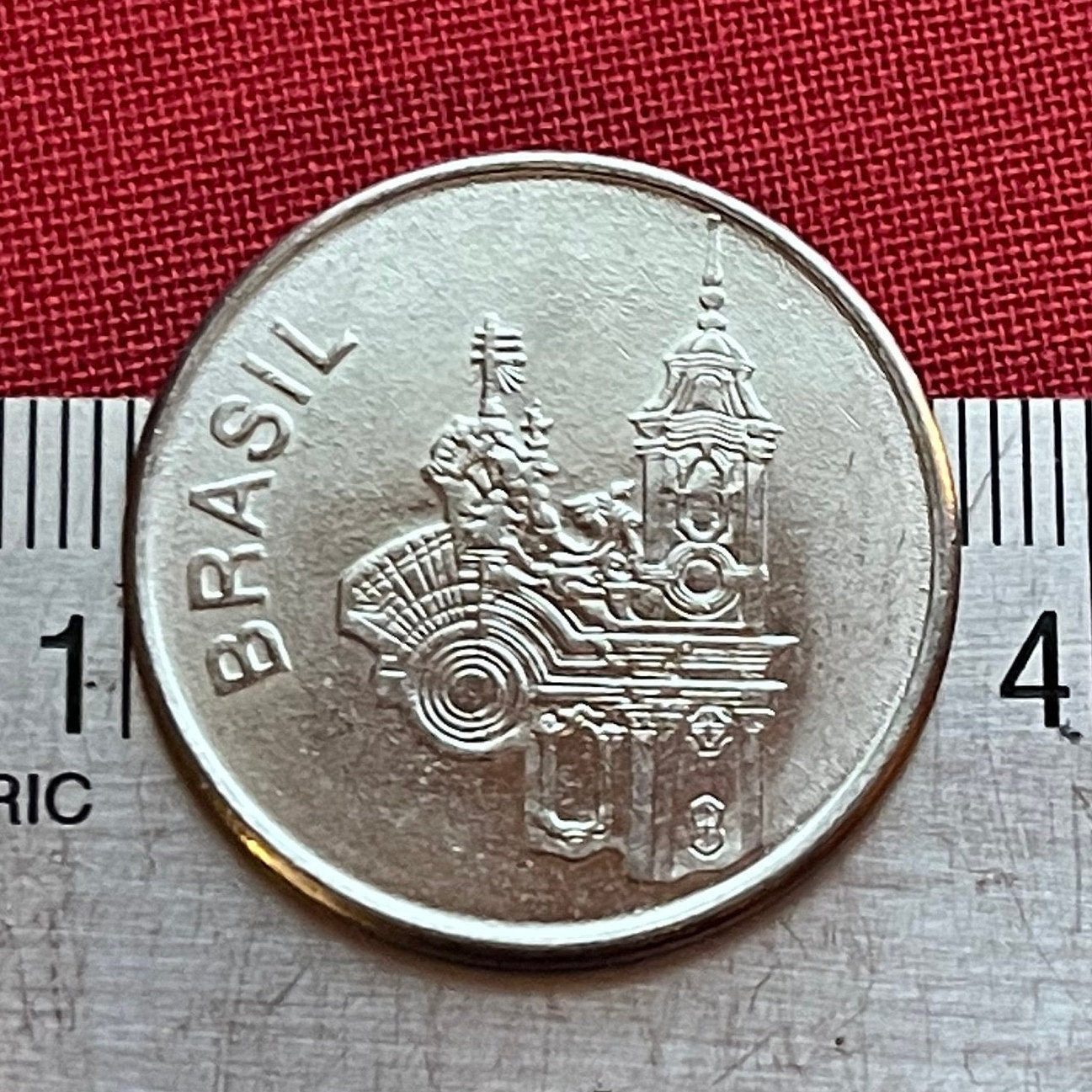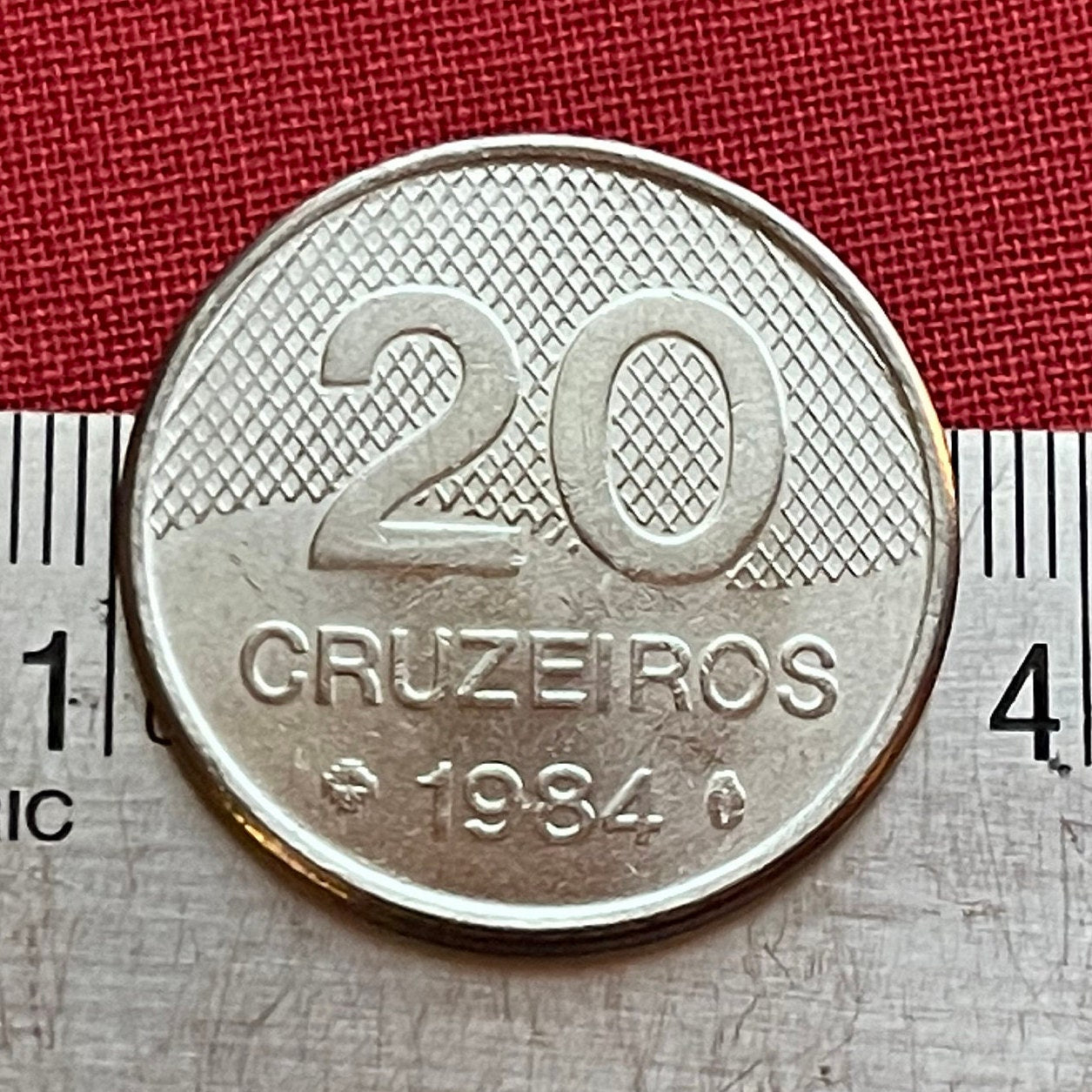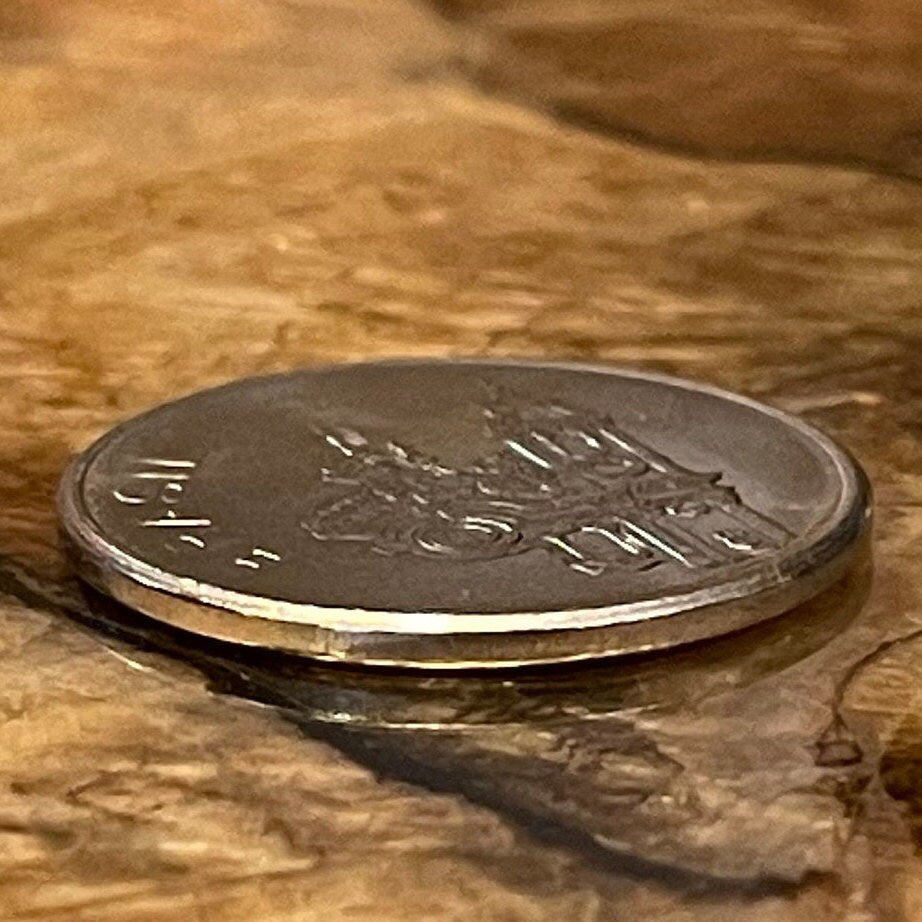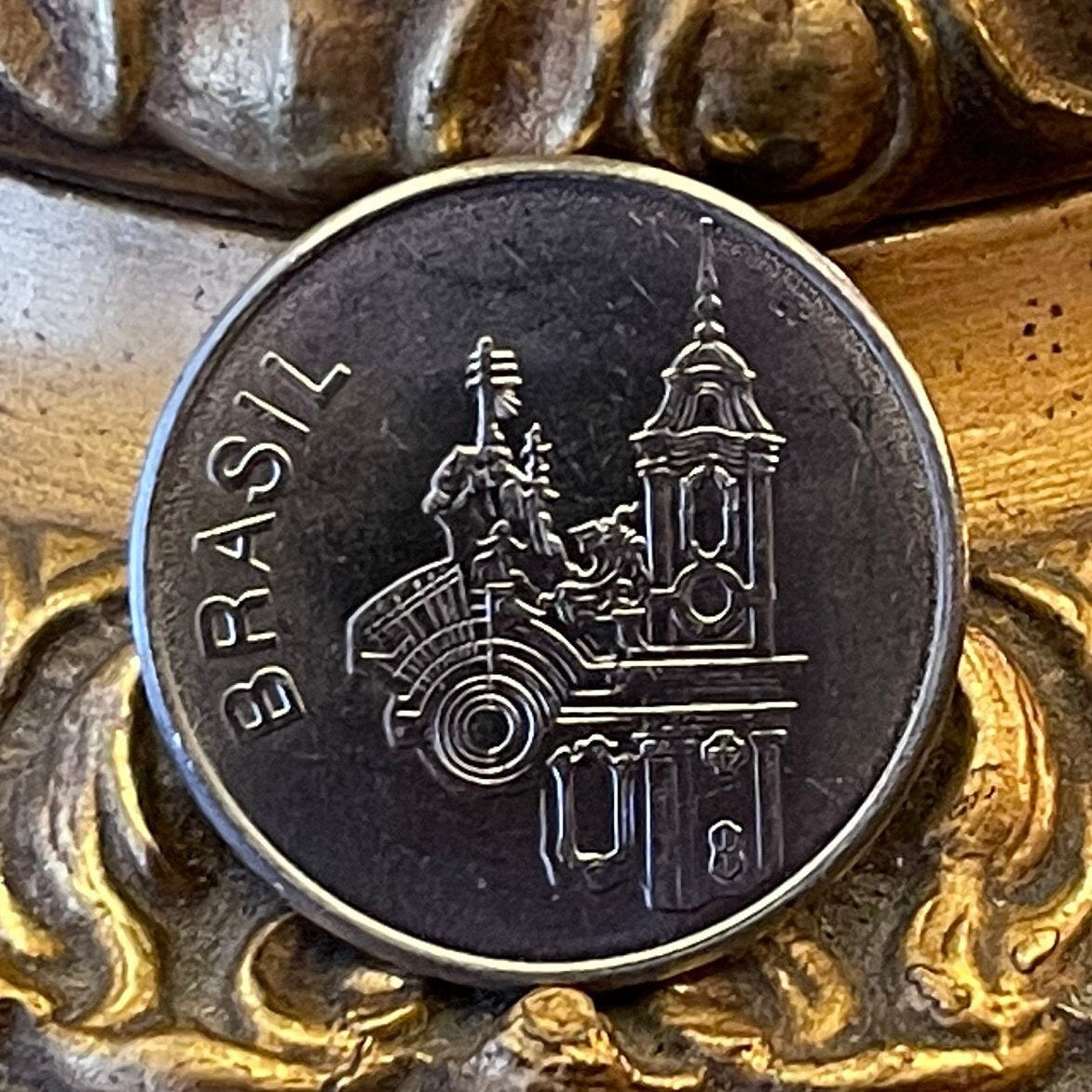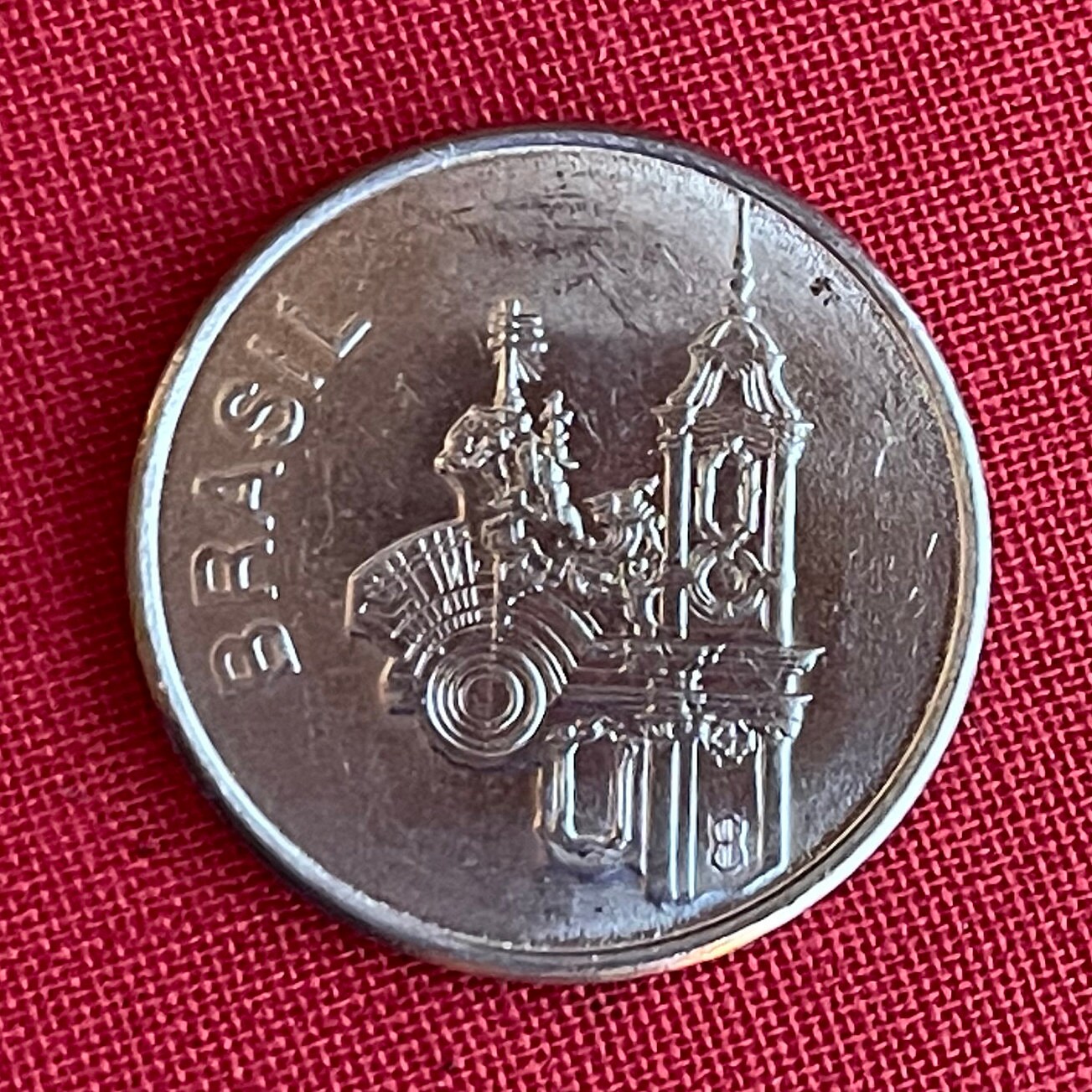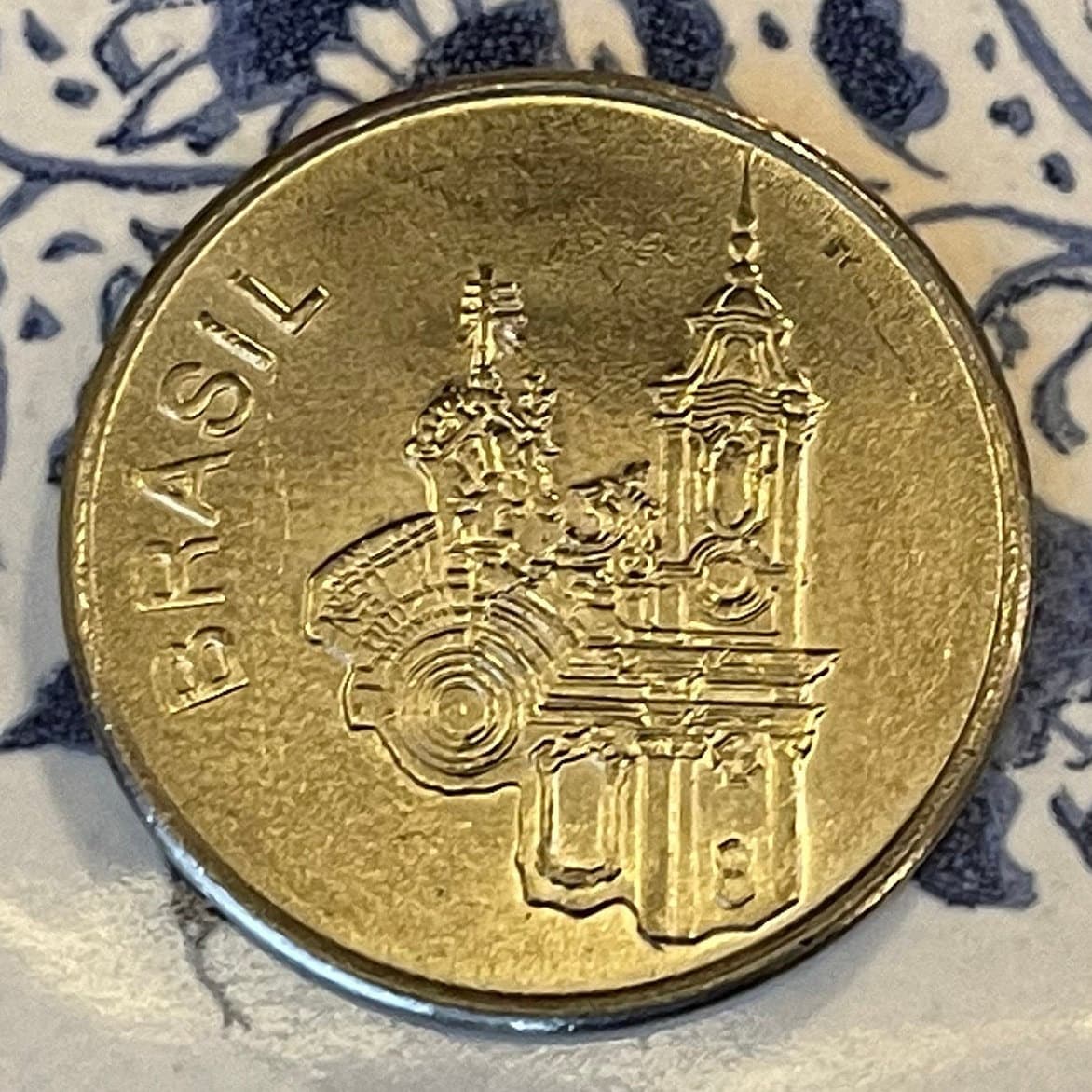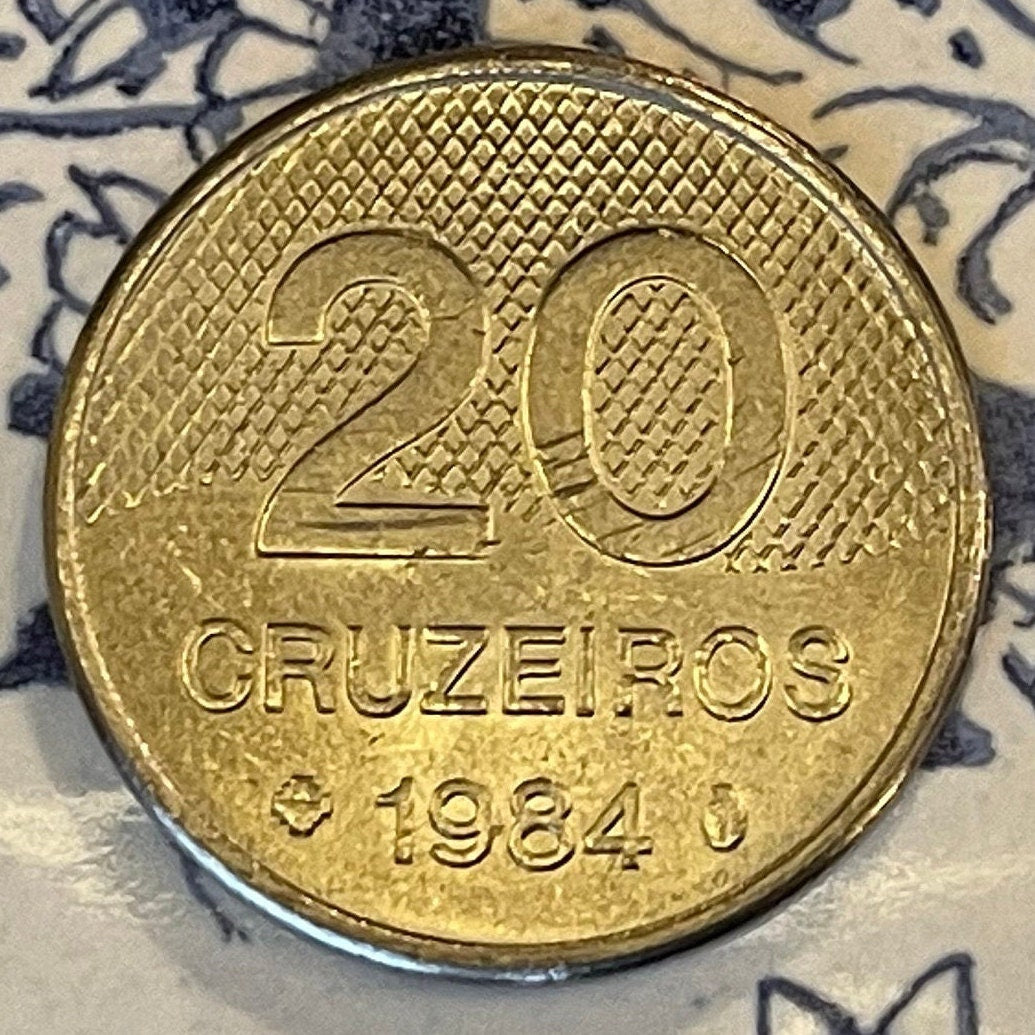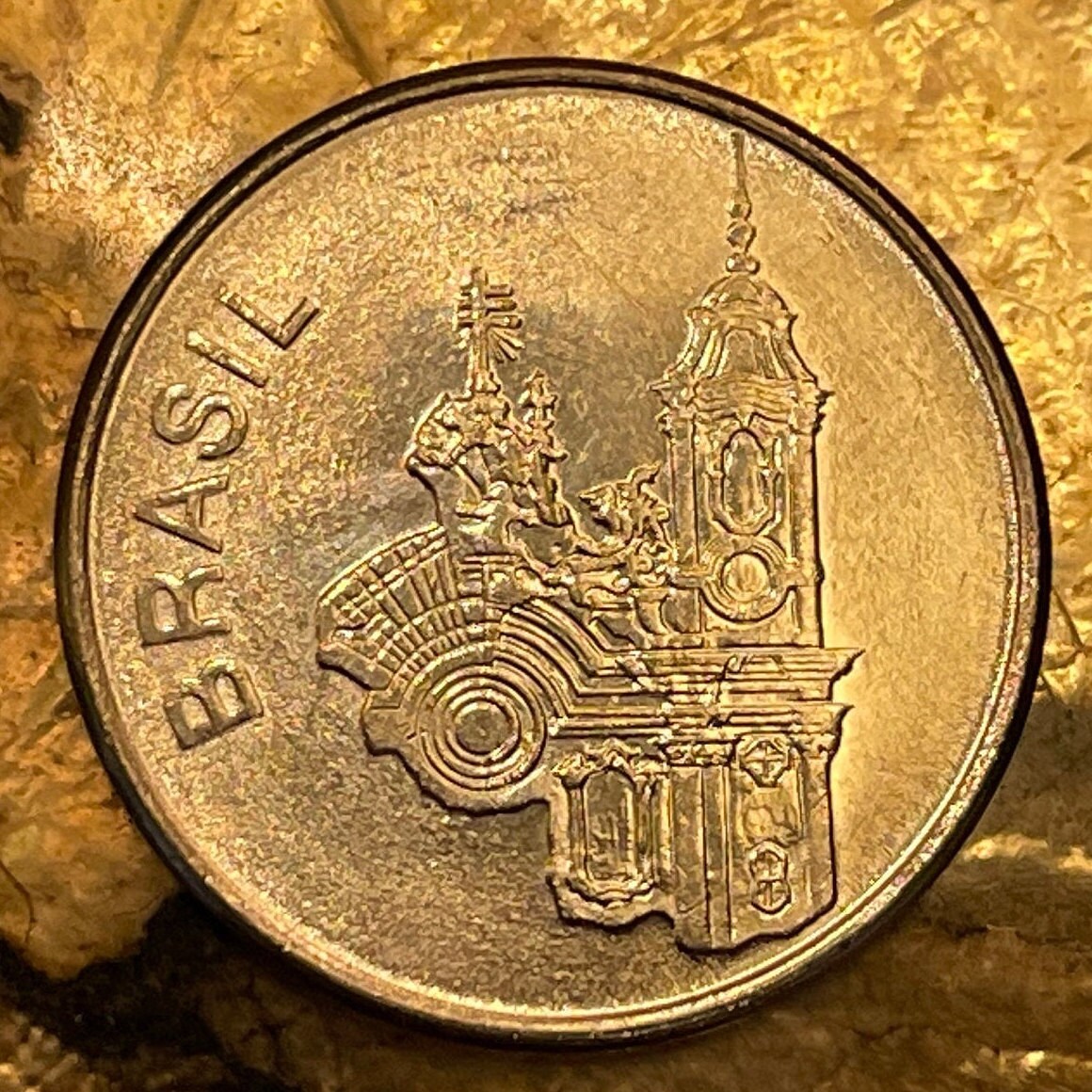elemintalshop
Church of Saint Francis 20 Cruzieros Brazil Authentic Coin Money for Jewelry and Craft Making (Francis of Assisi) (Aleijadinho)
Church of Saint Francis 20 Cruzieros Brazil Authentic Coin Money for Jewelry and Craft Making (Francis of Assisi) (Aleijadinho)
Couldn't load pickup availability
Church of Saint Francis 20 Cruzieros Brazil Authentic Coin Money for Jewelry and Craft Making (Francis of Assisi) (São Francisco de Assis)
Obverse: Church of Saint Francis of Assisi, and the country name to the left
Lettering: BRASIL
Translation: Brazil
Reverse: Denomination above date and a linear design behind the number "20" in the denomination
Lettering: 20 CRUZEIROS
Features
Issuer Brazil
Period Federative Republic of Brazil (1967-date)
Type Standard circulation coin
Years 1981-1986
Value 20 Cruzeiros (20 BRB)
Currency Cruzeiro novo (1967-1986)
Composition Stainless steel
Weight 6.1 g
Diameter 26 mm
Thickness 1.78 mm
Shape Round
Orientation Coin alignment ↑↓
Demonetized 1986
Number N# 5385
References KM# 593, Schön# 102, Schön# 102a
Wikipedia:
The Church of São Francisco de Assis is a Rococo Catholic church in Ouro Preto, Brazil. Its erection began in 1766 after a design by the Brazilian architect and sculptor Antônio Francisco Lisboa, otherwise known as Aleijadinho. Lisboa designed both the structure of the church and the carved decorations on the interior, which were only finished towards the end of the 19th century. The circular bell towers and the oculus closed by a relief were original features in religious architecture of that time in Brazil. The façade has a single entrance door under a soapstone frontispiece under a relief depicting Saint Francis receiving the stigmata. The interior is richly decorated with golden woodwork, statues and paintings, and the wooden ceiling displays a painting by Manuel da Costa Ataíde.
Due to its architecture and historical significance regarding eighteenth-century gold mining, the church is classified on the UNESCO World Heritage List. It is one of the Seven Wonders of Portuguese Origin in the World.
Architect
Antônio Francisco Lisboa was a Brazilian sculptor and architect in the eighteenth-century. His work primarily consists of Catholic churches and sculptures of religious figures. Born in 1738 as the illegitimate son of Portuguese architect Manuel Francisco Lisboa and an African slave, Lisboa grew up learning architecture and sculpting from his father. Lisboa is commonly known as Aleijadinho, or little cripple, as a description of a condition resulting from syphilis. Rodrigo Bretas describes this condition in his book, Passos da Paixão: O Aleijadinho.
Antonio Francisco [Lisboa] came to lose all of his toes. Consequently, he atrophied and curved, and even some of his fingers fell off leaving him with only the thumbs and forefingers and practically devoid of movement. The excruciating pains he frequently felt in his fingers and the sourness of his choleric temper led him to the paroxysm of cutting off his fingers using the chisel he worked with.
While skilled in both sculpture and architecture, Lisboa was kept out of the circles of local artisans due to his birth status. However, his profession combined with his father's race placed Lisboa's social status significantly above other non-white individuals, as race was highly performative and largely based on visual categorization. His mixed-race status and ability to claim a white father, along with his profession as an artisan, allowed Lisboa to distance himself from the slaves who built his churches without fully claiming whiteness. Lisboa's volume of work is incredibly large, includes this site, and also those such as Congonhas do Campo and the Twelve Prophets (Twelve Prophets of Aleijadinho) with many other doors, alters, facades, and chapels in the region.
Both Lisboa and Minas Gerais are known for their Rococo architecture. This architectural style is highly ornate and commonly found in churches built in the eighteenth century, with varying stylistic differences depending on influence of different European countries. Along with these elaborately detailed structures are often baroque paintings and sculptures. As explained by Monika Kaup (Ph.D., Ruhr University, 1991), "the delirious baroque effect is achieved by letting ornamentation run riot on interior walls, retablos, and facades."
The Church of Saint Francis of Assisi adheres to common Rococo elements, as Lisboa included gilded carvings and high-reliefs throughout the chapel and marked the exterior with the façade and soapstone frontispiece. As is consistent with the architectural style, this church also includes colonial Rococo paintings by Mestre Ataíde. Of the paintings, Ataíde’s most notable work is on the ceiling of the chapel. It is titled “Glorification of Our Lady Among Musician Angels” and depicts Mary surrounded by angels with various musical instruments. On the outer edges of the painting are prominent bishops and saints between large columns.
Share
